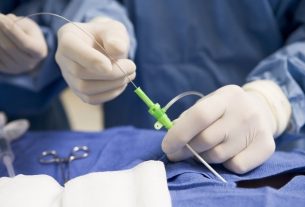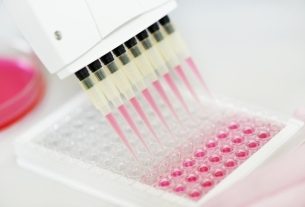Penoscopy is a diagnostic test used by a urologist to identify lesions or changes that are not visible to the naked eye, or microscopic warts, which may be present on the penis, scrotum or perianal region in men.
It is generally indicated to diagnose HPV infections, but it can also be used in cases of herpes, candidiasis or other types of genital infections, as it allows a detailed observation of the genital region. See other tests to detect HPV.
This exam is carried out in the urologist’s office and is simple and painless, with acetic acid being applied to the region to help better observe the skin of the genital region. During the examination, if the doctor notices the presence of any suspicious changes, he or she can collect a sample for a biopsy to be performed.

What is it for
Penoscopy is recommended to observe the penis, scrotum or perianal region in more detail in men, and can be performed to:
- Identify small or microscopic lesions caused by HPV;
- Analyze genital warts or other lesions that can be identified visually;
- Assess the genital or perianal region, when the partner has been diagnosed with HPV or cervical cancer, or presents symptoms of HPV, even if there are no visible changes to the penis yet;
- Diagnose viral diseases, especially HPV;
- Monitor the treatment of genital warts caused by HPV;
- Diagnose penile cancer;
- Investigate other sexually transmitted infections, such as genital herpes or syphilis, which cause sores or ulcers in the genital region.
Furthermore, penoscopy can be performed by a urologist to identify male candidiasis, for example. Know how to identify the symptoms of candidiasis in men.
How penisoscopy is done
Penoscopy is a simple and quick examination, which does not hurt, carried out in the urologist’s office, following a few steps, such as:
- Application of a compress with 5% acetic acidaround the penis for around 10 minutes, as it makes the lesions more evident;
- Observation of the region with the help of a peniscopewhich is a device with lenses capable of magnifying the image up to 40 times.
If warts or any other change in the skin are identified during the examination, the doctor may perform a biopsy using local anesthesia to collect a small sample of the skin in the region to be analyzed in the laboratory, thus making it possible to identify the type. of change, and whether the lesion is benign or malignant, and indicate the most appropriate treatment. Find out how HPV is treated in men.
How to prepare for a penisoscopy
To perform penisoscopy, certain precautions must be taken, such as:
- Trim pubic hair before the exam, without scraping with a blade;
- Do not have sexual intercourse for 72 hours before the exam, even if using a condom;
- Do not put medicine on the penis or perianal region on the day of the exam;
- Not washing your genitals immediately before the exam;
- Tell your doctor if you have any allergies to medicines or any other substance;
- Inform your doctor about the use of anticoagulant medicationssuch as warfarin, heparin, rivaroxaban or acetylsalicylic acid, as they may increase the risk of bleeding if a biopsy is performed.
These precautions facilitate the observation of the penis and prevent false results, avoiding having to repeat the exam, in addition to preventing complications.
Care after the exam
Peniscopy is a quick exam and lasts around 15 to 20 minutes, and after the exam, no additional care is necessary.
However, if a penoscopy with biopsy was performed, it is recommended to avoid sexual intercourse for 1 week after the exam, in addition to applying ointments prescribed by the urologist, to allow the skin to heal.
Bibliography
- MARQUES, SM; et al. Type-specific human papillomavirus infection among heterosexual males examined by peniscopy. Sex Transm Infect. 89. 1; 82, 2013
- TRUZZI, JC; et al. Contemporary human papillomavirus genotyping and correlations to peniscopy, cytology, and histopatology on over 1000 males. Diagn Cytopathol. 48. 11; 1021-1026, 2020
- IARC WORKING GROUP ON THE EVALUATION OF CARCINOGENIC RISKS TO HUMANS. HUMAN PAPILLOMAVIRUSES. LYON (FR): INTERNATIONAL AGENCY FOR RESEARCH ON CANCER. Human Papillomavirus (HPV) Infection. 2007. Available at: <https://www.ncbi.nlm.nih.gov/books/NBK321770/>. Accessed on 02 Dec 2022

Sign up for our newsletter and stay up to date with exclusive news
that can transform your routine!
Warning: Undefined array key "title" in /home/storelat/public_html/wp-content/plugins/link-whisper-premium/templates/frontend/related-posts.php on line 12
Warning: Undefined array key "title_tag" in /home/storelat/public_html/wp-content/plugins/link-whisper-premium/templates/frontend/related-posts.php on line 13



